CAR reporting? Not about motors…..
We were recently introduced to the journalistic technique called CAR (Computer Assisted Reporting).
CAR reporting is essentially finding a story through detailed analysis of information or data. A journalist using information and evidence they themselves have disseminated has far more clout then one relying on the work of others. Direct contact with evidence increases the chance of a journalist finding an exclusive story. A lot of CAR stories directly stem from FOI requests (Freedom of Information).

the FOI Act came into force in 2005. It gives anyone the right to ask any public body for any information on any subject. Legitimate reasons aside (such as national security), the information has to be provided to you within a month. The act was not intended purely as a tool for journalists but rather so the general public can bring to account those working on their behalf.
Nevertheless, the FOI has produced some sensational stories:
- A clandestine British torture programme existed in post-war Germany, “reminiscent of the concentration camps”.
- Ministers and MPs were shown to have spent in excess of £5 million on travel expenses.
- Seventy-four police officers serving with the Metropolitan Police were shown to have criminal records.
The average journalist normally has an aversion to numbers but the benefits far out-weigh the negatives. It helps there are numerous pieces of software that can do most of the number crunching for you. Microsoft Excel and Access are highly suited to creating and analysing databases and spreadsheets. A quick crash course and you’re ready to start!
Journalists are not mathmaticians. Neither are they economists, scientists or merchant bankers. The old saying ‘Jack of all trades, master of none’ is extremely apt. Nevertheless, this should not scare you. A key technique in CAR is to double-check the information you have, preferably with an expert. Another good idea is to approach the people you got the original data from. If you have a juicy story about inaccurate numbers or dodgy statistics this will work two-fold: Firstly, it gives those you are potentialy accusing a chance to reply – an added element to your story. Secondly, If gives them the opportunity to point out any fatal flaws in your workings. Double Score!
Cardiff: wheelie bins and the failing recycling system
The What, How and Why of Cardiff’s waste system
Waste and waste disposal is a controversial issue in Cardiff.
Two thirds of the city were introduced to the wheelie bin system four years ago.
Canton, Adamsdown, Penylan and Roath are the only areas which are yet to progress to the wheelie bin scheme. They will not be considered for another year. Of the 20,996 homes in the city’s 10 wards, only a third will remain on black, green and white bags after the latest expansion.
Click on the links below to see how the latest changes affect your area:
Butetown Cathays Gabalfa Grangetown Llandaff Llandaff North Riverside Splott Tongwynlais Whitchurch
The calendar for the new system. Click for an enlarged image.
Why the change?
The simple answer is because of pressure from the EU to increase recycling rates.
Councils are being pushed to recycle more by the EU’s 1999 Recycling Directive, the intention is to persuade residents to produce less rubbish. The directive states that Britain must cut the amount of waste that it sends to landfill to 35 per cent of its 1995 level by 2020. If the government fails then it faces a fine of £180million a year.
So, to force councils to recycle more, ministers introduced a landfill tax, currently £32 per tonne of waste sent to landfill. This costs Britons £25 per household per annum, and raises around £500million every year. In addition, Westminster has given each council an allowance of waste that can be sent to landfill. If councils don’t meet their targets, they have to pay an additional penalty of £180 a tonne. In short, councils are being forced to re-address the way they process and dispose of their waste.
Several councils have introduced fortnightly bin collections which they claim reduces the amount of waste each household produces. The bins are not huge and often people cannot fit in all their refuse. The council hopes this will encourage people to reduce the amount of rubbish they produce.
Councils have also introduced a wide range of voluntary and compulsory recycling arrangements, often requiring a series of different bins for different materials.
As a result, the levels of recycling throughout Britain have improved rapidly; of the 28 million tonnes of waste collected in England every year, 54% is buried in landfill, 34% is recycled and 11% incinerated. Raising recycling rates is not necessarily as good as it seems. It means, in order to hit targets, governments resort to collecting recycling but then shipping it abroad.
In September 2007 an internet blogger called Luther ap Blissett claimed: “Recycling industry insiders have revealed that Cardiff residents’ waste, which is picked up all in one bag without being separated, ends up far too mixed and contaminated to be recycled effectively.” The blogger continued by accusing the council of shipping the majority of its recycling for processing abroad.
A Cardiff Council spokesman responded “Only 5% of what we produce goes to the world market. High grade paper is sent to a reputable paper mill in Europe. The reason why it doesn’t go to UK paper mills is that a policy decision has been made not to accept paper from commingled recycling streams.”
If you have any queries about the new system call Cardiff Council’s bin helpline on: 029 2087 2087
What do the people of Cardiff think about the new wheelie bins?
Landfill tax
Landfill tax is one of the key methods employed by the government to enable the UK to meet its targets set out in the Landfill Directive for the land-filling of bio-degradable waste.
Cardiff county council has issued strict guidelines for its waste disposal:
Cardiff County Council’s waste policy Cardiff County Council’s waste disposal strategy
By increasing the cost of landfill, other advanced waste treatment technologies which are more expensive become financially viable. Landfill tax in the United Kingdom has risen at a rate of £3 per tonne every year since April 2001. Currently, the Landfill tax stands at £24.00 and will continue to rise each year. By the 2010/2011 financial year, a level of £48 a tonne will be reached.
In 2007/08 Cardiff alone produced 198,000 tonnes of municipal waste. The cost of burying waste in the ground increases every year as the landfill tax grows. Viridor is to appeal the decision taken by Cardiff Council’s planning committee to refuse planning permission for its proposed Energy from Waste Combined Heat and Power facility at Trident Park .
The Future?
Increasing the rates of recycling in the UK is a wonderful ideal. Attempting this by setting targets makes the whole process more complicated. Governments should not be able to reach their targets by collecting recycling and paying someone else to recycle it. It negates the point of collecting it in the first place. Wheelie bins are a valiant attempt to reduce our levels of refuse but it is my opinion that more needs to be done on the recycling front. It seems a little ridiculous to attempt to increase our recycling levels by reducing how much rubbish we produce rather than improving our recycling system.
Alternative Storytelling
We recently had an extremely interesting lecture from Dan Meadows.
Dan Meadows was a journalist who worked for Granada and Media Wales. Despite a successful career in journalism I suspect he would take more pride in being known a ‘documentarist’. He currently teaches at Cardiff University where he spreads the good word of digital story telling.
Dan Meadows says: “Digital Stories — when properly done — can be tight as sonnets: multimedia sonnets from the people. Short, personal and written with feeling there’s a strictness to their construction: 250 words, a dozen or so pictures, and two minutes is about the right length.”
Dan Meadows uses photos and narration to tell a story. His website, photobus.co.uk, showcases much of his work. The piece entitled ‘scissors’ is a perfect example of how to use modes different from the written word to tell a story.
Dan started on this path very early in his career. When he finished University he set out across the country in a double-decker bus. He took photos of people, developed them and handed them out for free. Because it was an exercise of freedom and expression he never recorded the names of his subjects.
We were then tasked with creating some digital stories of our own. Here is Fiona Roberts‘ digital story – Sloightly on the huh.
My own attempt was slightly less orthodox. Me and my co-conspirator, James Franklin, set out to make some mischief. With an inability to take ourselves seriously our plans quickly degenerated and what we were left with was pretty stupid. Nevertheless we forged on and cobbled something together.
Our piece is not pure photos as Dan suggests, instead we used a fair amount of video.
For this we apologise to Dan and hope he can forgive us. We did listen Dan, we just got a little carried away!
So… Here we are. How to be a modern journalist:
Type-writer to Twitter
Rory Cellan-Jones, Technology Correspondant for the BBC, recently visited us here at the Cardiff School of Journalism. As the Technology Correspondent at one of the world’s oldest and biggest media organisations he sits at the hub of the changing media world.
Rory talked a lot about the changing nature of journalism, the effects of twitter, blogging aand modern technology. Interesting, but a lot of what we’ve heard before. Although apparently i need to get an i-phone.
But then, shock horror, it changed. Instead of eulogising about these changes Rory said that despite the evolving world of journalism and the plethora of new skills journalists require, the foundation of good journalism is still the same core skills it has always been: the nose for a story and the ability to produce a good opening line. In Rory’s opinion journalism remains the same; it’s the format that’s changing.
Rory also made us aware that the audience is closer than ever and that they’re not afraid to tell us when they disagree.
“Most of the time” he joked, “your audience knows more then you.”
@ruskin147 on Twitter
Blogging for Blogging’s Sake
A few weeks ago we had a lecture from Adam Tinworth. Adam is the Blogging Editor for Reed Business Information. RBI is a business publisher with an extensive range of successful titles.
Adam talked mostly, as you would expect considering his job title, about blogs, how to blog and the future of blogging.
There’s an old saying: ‘everybody has at least one book in them.’
Literacy and the ability to string together a sentence aside, I have always agreed with the sentiment. Everyone has some form of information or view that some person somewhere will find interesting.
The modern equivalent is that everybody should blog.

Similarities can be drawn with the old-fashioned concept of a beat journalist. Modern thinking has forced the beat journalist to the brink of extinction. There is too much information to gather and most it available online. Financial restrictions for papers and media organisations don’t aid the situation either. Todays reporters have far more ground to cover and information to collate which often means they rarely leave the office.
A journalist is not necessarily the most knowledgeable person on his beat or patch but he does have the contacts, information and ability to get in touch with the people who are. In a simple explanation, a journalist writing a science article will not have the knowledge of a scientist. But with blogs and social networking it is much easier for said journalist to ‘pick the brains’ of the experts.
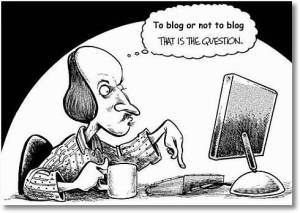
Blogging is interactive. This is the whole concepts greatest asset.
Nobody really knows where journalism is going. It is my opinion (and stringent hope!) that professional standards will always be necessary. Citizen journalism can only go so far. In future, in part due to the blogosphere, journalism will be a team effort. User generated content being collated by trained journalists in order to provide trustworty and creditable content.
Blog Off……………………
To Tweet or not to Tweet?
“Join Twitter,” They said.
“No,” I, the ever-cynic, replied.
“You’ll get left behind,” they said.
“But it’s silly and confusing,” I moaned.
“No its not, its cutting-edge, instantaneous and cool,” I was told.
So, as a trainee journalist fully aware of the changing times, I joined the latest online revolution.
[picapp align=”none” wrap=”false” link=”term=twitter&iid=5242540″ src=”5/3/9/9/Microblogging_Site_Twitter_34d0.jpg?adImageId=9621931&imageId=5242540″ width=”500″ height=”333″ /]
I created a Twitter account, uploaded a profile pic and published my first ‘tweet’. It was probably something innane about coffee or what boxers I was wearing. Clearly, like so many people who hear about Twitter, sign up and quickly slip off the radar, I had failed to grasp its deeper nuances..
Twitter has been in the news recently, making and spreading it. Information travels instantaneously across a huge network if there is something really ‘juicy’ then the news spreads like wildfire.
The Trafigura incident and Nick Griffin on Question time are two obvious examples. Bloggers and Tweeters went crazy, an unstoppable ‘online-avalanche’ which was a wonder to behold.
For a journalist Twitter is a useful tool because the so-called ‘audience’ is at your fingertips. Its also much easier to interact with them. If you are clever then leads and information come to you. The people who are the news are writing about it as it happens! How helpful is that? or does it threaten the journalist’s livlihoods.
Other members of the Twitter ‘family’ help expand the Twitter experience. Twitterfall and TweepML allow you to specify whose tweets you see and specify certain trends and topics. Its an excellent method of hearing lots of people’s opinions on specified issues and events.
Twitscoop allows you to see what words are are being used the most frequently. For a journalist this is useful because it allows you to pick up on trends and themes. This sort of application enables information to travel unbelievably quickly from one network of contacts to another.
It gives you a real buzz to have so many things gong on, to feel truly ‘linked-in’.
Twitter also allows you to follow instantaneous action, such as sports events.
[picapp align=”none” wrap=”false” link=”term=twitter&iid=5243202″ src=”2/b/5/e/Microblogging_Site_Twitter_c9f8.jpg?adImageId=9621981&imageId=5243202″ width=”500″ height=”318″ /]
Before we get too self-congratulary my inherent cynicism forces me to point out that as great as it is to ‘connected’, ‘part of an online community’ with ‘your finger on the pulse of the digital world’ Twitter isn’t everything. Its the method which introduces you to a headline or a lead. To delve further more is required. Lets be honest, if you hear breaking news of massive proportions via twitter what do you do next? You turn to trusted news formats. You run to the BBC’s and the Guardian’s. The task the BBC and journalists face is keeping up with the pace of Twitter.
All this mutual back slapping is threatening to exaggerate the potential of twitter. Lets not get carried away. Twitter and all its relevant formats are simply the latest developments of online networking. Twitter is not going to write the news. Professional analysis, interpretation and mediation will always be needed.
and now the ever-cynic is a fully entrenched twitterer (?) although I’ll never get my head round the jargon.
A Victory For Network Journalism
I’ve just found this in my saved drafts, I wrote it last week but evidently forgot to publish it. It may have lost some of its relevance but as a blogger myself i believe the implications and repercussions that will surely occur are extremely important. The key concept is that news hit the blogging world before making the headlines. The blogging community has revealed itself as a potential super-weapon in a journalists arsenal. I am of course referring to the Trafigura Scandal.
In September 2006, Trafigura, the shipping company specialising in mineral and oil waste, commissioned the internal ‘Minton Report’ to determine the effects of waste dumped in Abidjan, off the Ivory Coast. The original report was leaked and can still be found on wikileaks.org.
International law firm Carter Ruck obtained a ’super-injunction’ on 11th September 2009 stopping the Guardian Newspaper and other media platforms from reporting on the Minton Report.
MP Paul Farrelly questioned the legality of Carter Ruck’s stifling of the Guardian, accusing the law firm of acting in contempt of parliament.
The paper published an article saying it was unable to comment on an unspecified question (Paul Farrelly’s) but insinuated that they believed it contravened their rights to free speech laid down in the 1869 Bill of Rights.
An unknown citizen journalist investigated the insinuation and followed the trail to Mr Farrelly’s question to parliament. Soon the information was uncovered and circulated across bloggers and twitter. Carter Ruck’s ’super-injunction’ had been avoided and negated. Carter Ruck, admitting defeat, lifted the injunction allowing the Guardian to report on the findings.
The details of the findings can be found on the guardian website in this article. Needless to say it states there were serious effects on the local populace, including: “burns to the skin, eyes and lungs, vomiting, diarrhea, loss of conciousness and death.”
One has to wonder whether this information would have come to light without the actions of the online community. The sad answer is that it probably wouldn’t have. Large firms are able to utilise injunctions to stifle information they believe would be damaging to their reputations. The injunctions are put in place under the pretense that leaked details may affect future law suits.
In conclusion it is my belief that the Trafigura Scandal can be seen as a marvelous victory for network journalism. Journalists used the bloggo-sphere and twitter to negate an injunction they believed was impeding them from carrying out their moral responsibility. Nevertheless the episode has also highlighted weaknesses in our current law system that allow large companies to muzzle the media. I expect the repercussions have only just begun………..
The ‘Internet Manifesto’ and associated cynicism
Journalism is changing/ has changed/ will change.
A few years ago a group of German journalists produced an internet manifesto for online journalism. It could be seen as an attempt to remind journalists of the constraints of professional code and highlights some useful approaches to online content.
All that truly seperates trained journalists from the next ‘average joe with a keyboard’ is the existence of codes of practice, tradecraft and professionalism. It is possible for untrained and unpaid internet users to follow similar rules and these people are journalists too. A fact which probably terrifies most of the ‘Old Guard”.




I believe the greatest threat is in fact the greatest asset; user generated content. Conversing with ‘the people formerly known as the audience’ is possibly the strongest method of spreading information and opinions. To avoid the inherent weaknesses and pitfalls of online journalism we have to abide by our professional standards. It is up to each online journalist; paid or unpaid, to set themselves their own standard.
With this in mind I agree with the ideology and principles laid out by the manifesto. The web is rife with examples of bad journalism and the manifesto is a valid attempt to lay out some ground rules. however we are not talking about a style guide for a newspaper or a code of practice for a set type of journalism; we are talking about a mass and mess of information provided by millions of people. In my opinion the the manifesto is ideological but impractical. at best it will prove useful as a set of guidelines.
Alison Gow, commenting in her blog ‘headlines and deadlines’ agrees with the principles of the manifesto but puts forward an argument saying the biggest barriers to online journalism are problems of a far more practical nature. Her article can be found here. Alison is the executive digital editor for the Liverpool Echo and Liverpool Daily Post and has experience in the transition from newspaper to online. She highlights the major problems as the attitudes of print trained journalist about incorporating online into their daily jobs
Hello world!
Welcome to WordPress.com. This is your first post. Edit or delete it and start blogging!
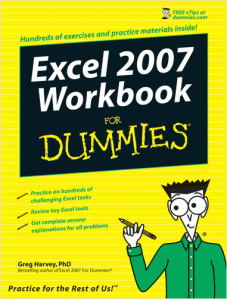

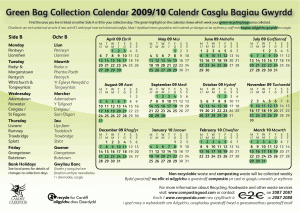

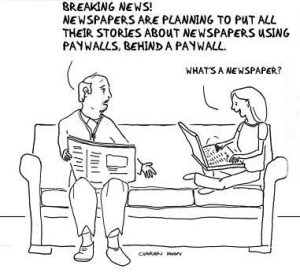
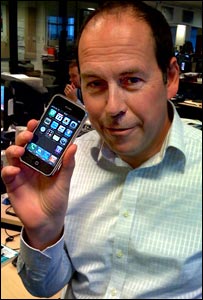
Recent Comments